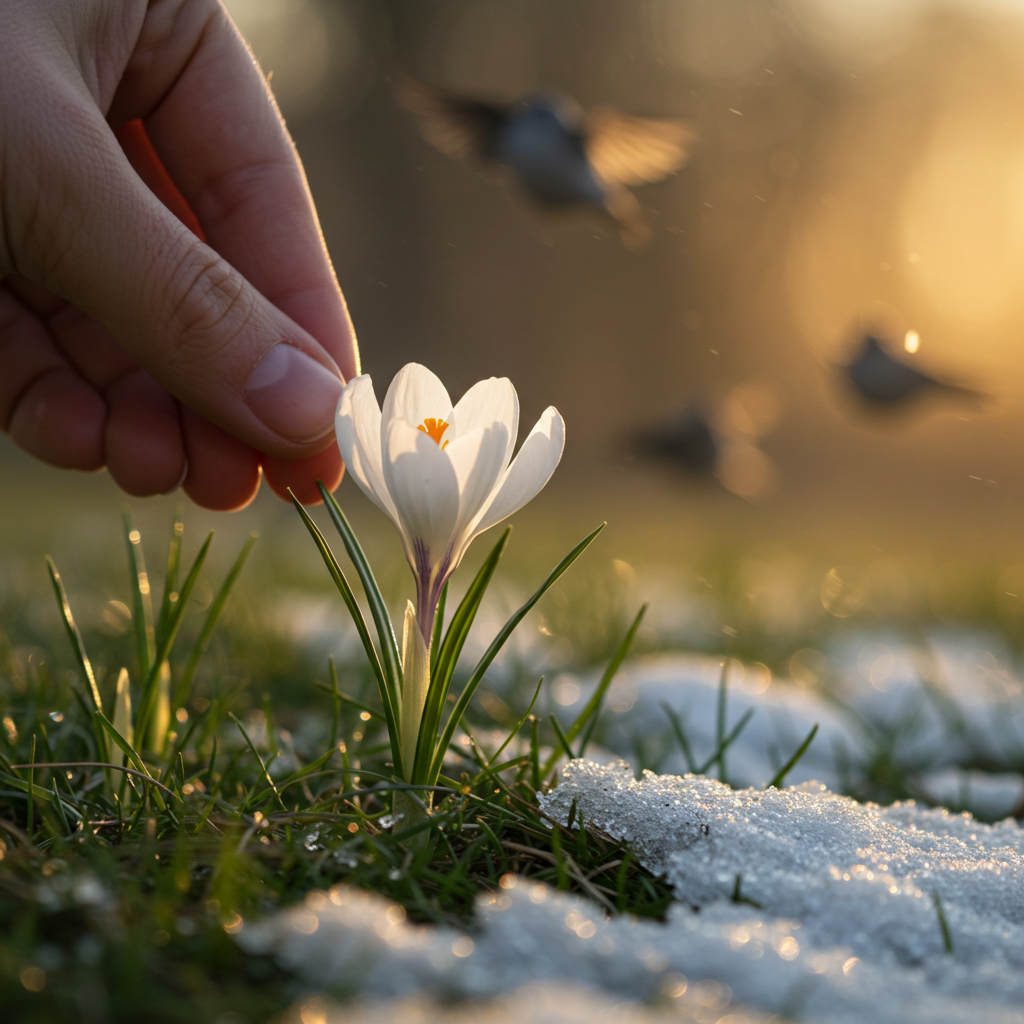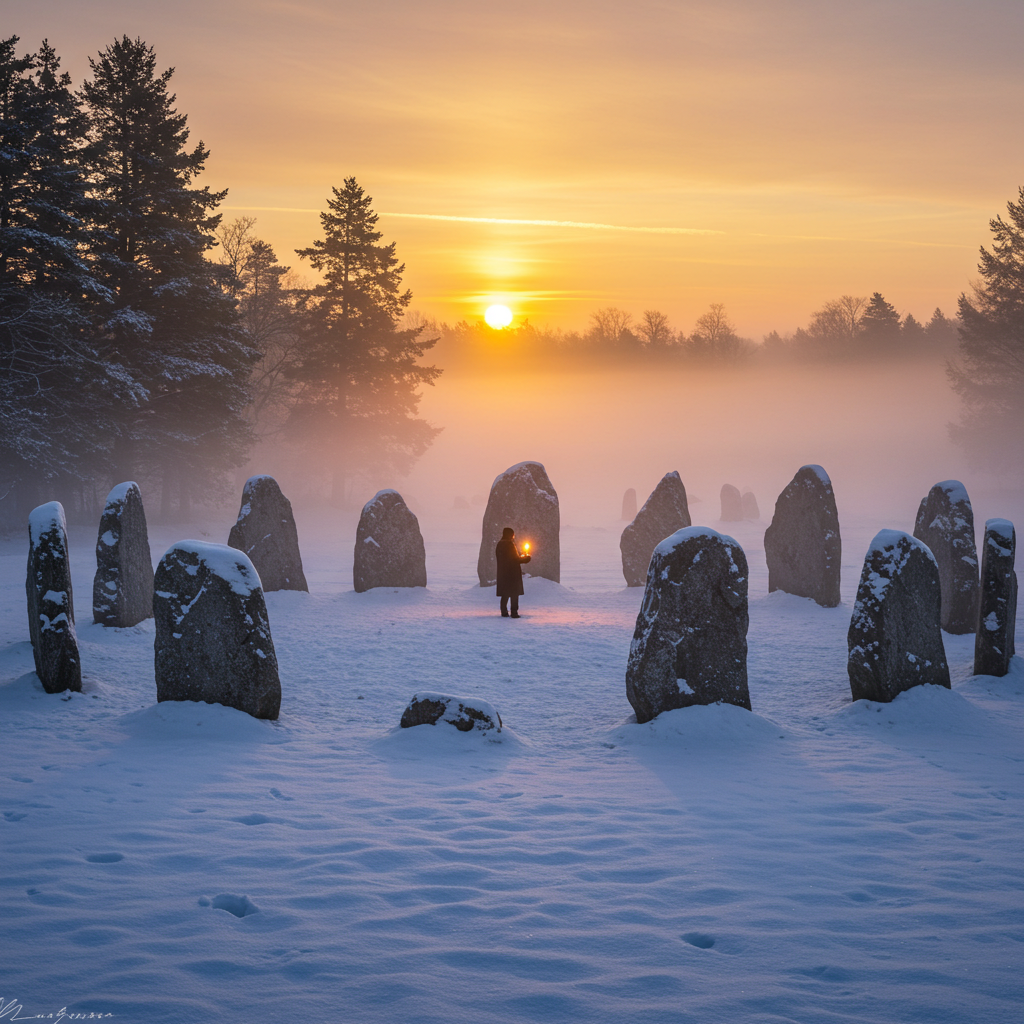This superstition suggests that recording the date of the first snowfall or snowstorm—typically by writing it down in a calendar or journal—can bring about good fortune or financial luck, such as winning a bet, before the end of that winter season. The act is simple: as soon as the first visible and measurable snow occurs, the person notes the full date. While no specific materials are required beyond pen and paper (or, more recently, a digital calendar), the act itself holds symbolic significance. It treats the first snow not just as a weather event, but as a marker tied to fate or fortune. The belief is often practiced without ceremony but is rooted in the idea that natural occurrences can influence human outcomes. Some variations encourage placing the written date under a pillow or keeping it in a coat pocket for added good luck.
Seasonal Changes and Solstice Celebrations
According to Celtic, Germanic, and various European pagan traditions, discovering holly growing wild during the winter solstice—particularly finding a perfectly formed leaf with sharp points and glossy surface—provides protection, good fortune, and spiritual blessing for the finder throughout the coming year. This botanical luck supposedly intensifies through specific factors: naturally fallen leaves carry stronger influence than deliberately cut ones; leaves found at exact solstice moment (astronomical midnight) hold greatest power; while those discovered near sacred sites or natural boundaries connect to enhanced spiritual energies. Some traditions specify proper handling methods: the leaf should be carried in the left pocket; placed above the main doorway; or incorporated into personal ritual items.
According to folk belief primarily in Northern European and North American traditions, making a specific wish during the initial snowfall of the winter season—particularly while catching and observing the first snowflake to land on one’s clothing—ensures that wish’s fulfillment during the coming year. This meteorological wish-granting supposedly works best under specific conditions: the wisher must be outdoors when snow begins; the wish should remain unspoken and private; and the intent must be focused while physically connecting with the snow (through touch or by catching flakes). Some traditions specify enhanced effectiveness during evening snowfalls or when the moon is visible during the snowfall.
According to widespread belief primarily in Northern European traditions, discovering and gathering the first wildflower to bloom after winter—particularly finding it unexpectedly rather than deliberately searching—ensures exceptional good fortune throughout the coming growing season. This botanical omen supposedly works through capturing the concentrated renewal energy present in the earliest bloom, which then transfers to the finder. Some traditions specify additional requirements: the flower must be picked with the right hand; specific words of gratitude should be spoken; or the bloom should be dried and carried as a charm or pressed in a book to preserve its lucky influence throughout the year.
According to widespread belief across multiple cultural and religious traditions, the winter solstice—the year’s longest night and shortest day—represents a spiritually powerful time for personal transformation, new beginnings, and strengthened intentions. This astronomical timing supposedly creates ideal conditions for releasing old patterns while establishing new foundations. Many traditions specify ritual activities to maximize these energies: lighting candles or fires to symbolically strengthen returning light; special cleansing practices to remove accumulated negative energy; creating intention documents or objects to manifest during the coming light-increasing period; and communal gatherings to amplify collective renewal energy.
The summer solstice, the longest day of the year, marks the point when the sun appears to pause in its northward journey before beginning to move south again. This “sun standing still” moment—derived from the Latin solstitium—has been regarded across cultures as a powerful time for invoking good fortune, setting intentions, and performing rituals linked to abundance, protection, and new beginnings.
This liminal solar moment was believed to create a temporal “opening,” a brief period of heightened cosmic energy that could influence human affairs. Many traditions held that wishes or spiritual acts performed at this time were more likely to be fulfilled. The sun’s peak strength was symbolically associated with illumination, fertility, and divine presence.





